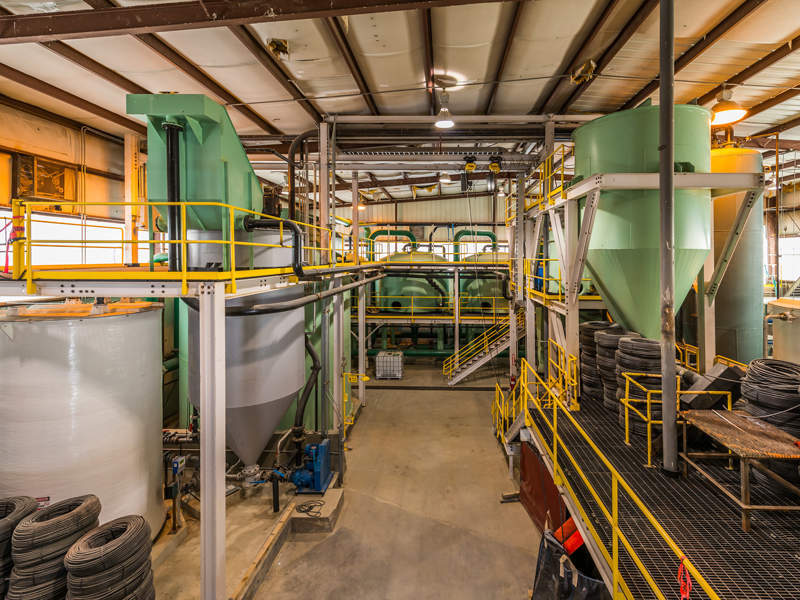Pershing Gold is developing the Relief Canyon gold mine located in Pershing County, Nevada, US. Ownership of the gold mine was transferred to many parties before Pershing Gold finally acquired it from Platinum Long Term Growth in August 2011.
The historical mine is estimated to produce 93,900oz of gold a year through its life of mine (LoM) of 5.6 years.
Early construction works on the project began in February 2018 and production is anticipated to commence in the third quarter of 2018, following the receipt of additional financing.
Relief Canyon gold mine geology and mineralisation
Located approximately 95 miles (152.88km) north-east of Reno in Nevada, the Relief Canyon project is situated to the south of Pershing Gold and Silver trend adjacent to the Humbolt Range.
Project Gallery
-

The Relief Canyon gold mine is located in Pershing County, Nevada. Image courtesy of Pershing Gold.
-

Pershing Gold commenced early construction works at the Relief Canyon mine in February 2018. Image courtesy of Pershing Gold.
-

A 21,500tpd capacity heap-leach processing plant will be used to process the ore at Relief Canyon. Image courtesy of Pershing Gold.
"Conventional open-pit method will be implemented at the historical mine, which is proposed to be developed in two phases."
Gold mineralisation of the property's main zone is contained mainly within a collapse breccia located between the Cane Spring Formation massive limestone and the Grass Valley Formation. A broad, northeast-trending antiform, plunging approximately 10° to the south-west, is formed within the deposit area.
The breccia-hosted mineralisation intrudes into the overlying Grass Valley Formation for a short distance. The thickest portions of the breccia, along with associated mineralisation, are located primarily along the broad crest of the antiform.
Relief Canyon gold mine reserves
The Relief Canyon gold mine is estimated to contain proven and probable oxide reserves of 30.53 million tonnes (Mt) containing 635,000oz of gold. It also has estimated silver reserves of 10.27Mt containing 1.6Moz grading 0.113g/t of silver.
Mining and ore processing at Relief Canyon gold mine
Conventional open-pit method will be implemented at the historical mine, which is proposed to be developed in two phases.
The first phase will expand the mining operations to a pit bottom elevation of 5,080ft along with partial back-filling of the pit to approximately 20ft above the historical groundwater elevation.
The second phase is proposed to implement additional mine expansion activities, which will allow mining further below the water table.
Conventional heap-leach cyanidation recovery circuit, with a capacity of 21,500 tonnes per day (tpd), will process the ore at Relief Canyon. An estimated 8Mt of gold-bearing ore a year is expected to be leached at the heap-leach processing plant.
The processing plant is estimated to process an average of 5.1Mt a year over its LoM, assisted by a single-stage crushing plant processing up to 6Mt a year. In addition to gold recovery, the plant will also recover silver.
Infrastructure facilities at Relief Canyon
Access to the project is through the US Interstate 80 and the main Coal Canyon access road.
Power required for the mining operation will be sourced from the NV Energy high-voltage (13.2kVA) overhead transmission line. Process water will be initially pumped to the plant site from the existing production wells PW-1 and PW-2, which are located west of the pit area.
Contractors involved
Mine Development Associates, Kappes Cassidy & Associates, Jorgensen Engineering, and Technical Services of Centennial were engaged to prepare the preliminary feasibility study report for the mine.
Golder and Associates prepared the pit slope parameters for the gold mine, while Ames Construction was engaged for the preliminary construction activities.
